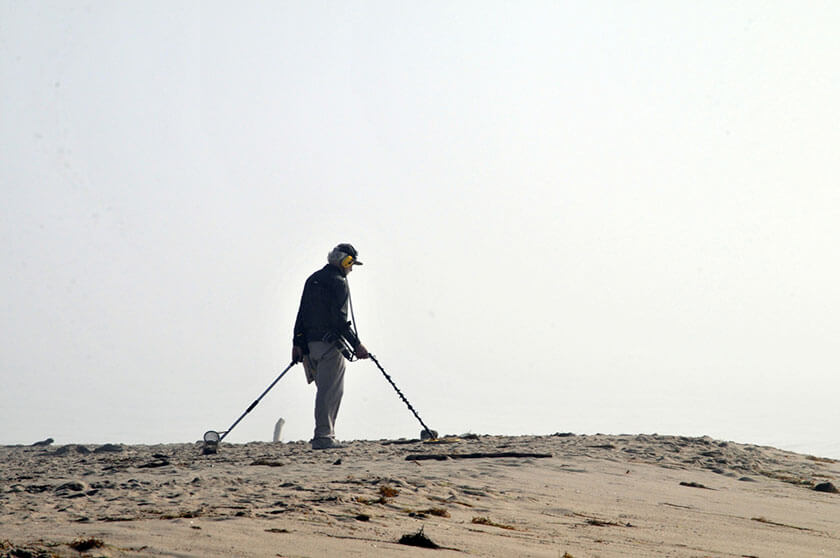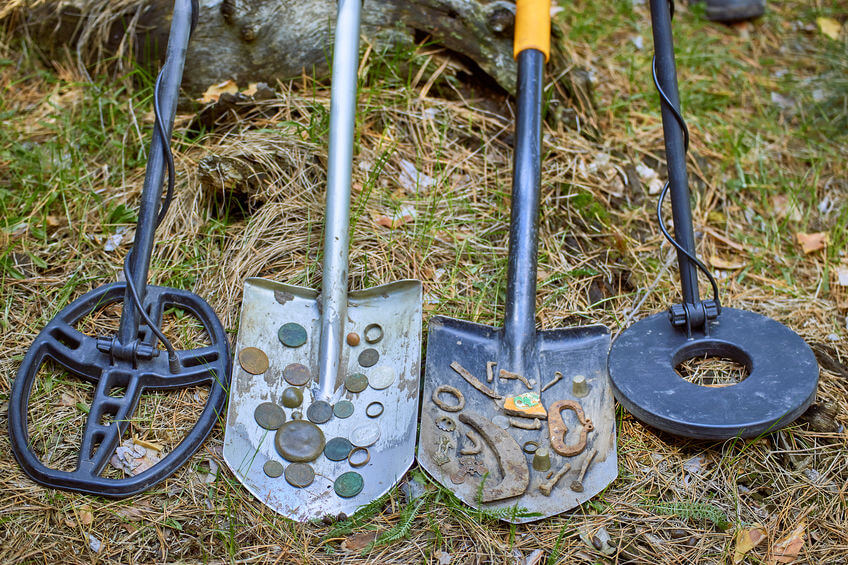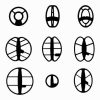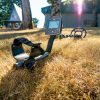
Overview
Unfortunately, it is almost impossible to predict the depth that a metal detector can search to. There are many variables that involve both the type of detector, coils and the ground that factor into the answer.Learn more on how the frequency the metal detector is using impacts on how deep it can search.
back to menu ↑Factors that Influence Search Depth
- The soil’s conductive properties: Heavily mineralized soil has a tendency to reduce your metal detectors depth range. Soil mineralization occurs when the ground is full of small bits of metal, usually iron. The number of minerals in the ground can vary quite a lot. You might need to re-ground your detector’s balance to adjust for the mineralization of the soil; that is unless there is automatic ground balancing on your detector. In that case, you might need to increase discrimination and/or decrease sensitivity on models that have extraordinary sensitivity such as the Fisher 1266-X. Also, you can perform a depth test by burying a few objects in the soil then checking the readings on your detector. This will allow you to fine-tune the sensitivity and discrimination for maximum effectiveness at detecting underground targets.
- How long an object is buried: Different chemicals contained in the soil result in corrosion of metal. There are some metals that corrode more quickly than others do. Modern zinc pennies are easily attacked by soil chemicals, whereas on silver, copper, and gold this action is barely noticeable, or not at all. Since metal is eaten away at by these chemicals, oxidation (rust) occurs, which get absorbed by the soil surrounding it. That causes the soil to become even more conductive, and that in turn causes the metallic object to seem a lot larger than it really is and makes detecting it easier as well. This is referred to as the “halo effect.”
- Size of the object: The larger a metallic object is, the deeper and easier it is to detect it. For example, it is much easier to detect a bucket of coins than it is one coin. So the more surface area that is viewed from above ground, the deeper a metallic object can be detected.
- An object’s shape: All metallic objects reflect part of a signal that your metal detector transmits. In that way, an object functions like extra antennas, and therefore the shape of it is an important factor. Loop or a ring-shaped object that is laid out flat end up producing the best results; it is also easy to detect a dish-shaped or flat object. The deepest metal detector for coins may not be able to locate smaller objects closer to the ground due to their different profiles. Rod-shaped items, particularly when they are scanned from the end, are quite hard to detect unless you are using a Fisher FX-23 or another ferromagnetic detector and the object is made out of iron.
- Degree of magnetization: Detecting depth is strongly influenced by the degree of magnetization with ferromagnetic locators like the FX-3. For example, a magnet may be detected at a far greater depth compared to iron of the same mass. The greater magnetization that has object has, the deeper it may be detected by ferromagnetic metal detectors.
Best large deep targets
For finding deep, large targets like buried cables and pipes or caches (hidden treasure), a two-box detector, like the TW-6 or Fisher Gemini-3, is best. However, it is different to use a 2 box metal detector connected to a handle than it is to use a hand-held standard metal detector. Although it does go deeper, when using a two-box detector the smallest metallic object that you reasonably can expect to find is around the same size as a cantaloupe melon, even when the object of that size is located right on the ground. However, using a TW-6 or Fisher Gemini-3, the same melon-size object can be detected as deep as 6 feet. With two-box detector, maximum depth is achieved through carrying the unit suspended by a strap low to the ground. The TW-6 and Gemini-3 offer an extra-long handle that increased depth penetration as well through widening the separation of these boxes on its handle. Those units are less versatile and more expensive compared to metal detectors with a single box.
back to menu ↑External Factors (does not relate to the actual detector)
- Depth of metal object.
- Type of soil. How compacted or aerated the soil is and the level of mineralization contained within the soil.
- The slope of the ground. The angle of the ground may affect the depth as the object might end up being buried deeper underground. Also, the angle of detection might create more ground in between the metal target and coil.
- Size of a metal object. Objects that are larger may be detected at a greater depth.
- Type of metal. There are some metals that may be detected deeper due to being more conductive.
- Rainfall. It is hard to detect deeper with wet ground and over time it often results in object sinking deeper more quickly.
Internal Factors (the actual metal detector):
- Coil size. In general, with Ace and other beat frequency detectors, depth of detection is just over or close to the coil’s width. A bigger coil will provide increasing metal detector depth, however, accuracy and sensitivity might be lost the bigger it goes.
- Type of technology. Beat frequency detects less deep than Pulse induction and is affected more by ground minerals. Go here to learn more about Beat frequency vs. Pulse induction.
- Frequency. Detectors all operate at various frequencies. High = less depth but great sensitivity. Low = less sensitivity but greater depth. There are some detectors with a combination to get the best from both. Click here to learn more about frequency.
Important considerations:

The type of detector and search coils can impact how deep you detect and what you find.
- Battlefield relics and lost coins are frequently a lot shallower underground than a lot of individuals think they are at first. They could be just below the surface.
- In general, a coin or gold ring lost 100-200 years ago on the surface will over time only sink just about 1-8 inches underground.
- That is the reason why metal detectors have been specially designed to be more accurate at this depth range.
- There are some relics that are frequently found after over 100 years on the surface. Rainfall, soil, etc. all determine how deep an item ends up sinking to.
- Going deeper to about a foot means that your luck will be less and less since it is very unlikely that the treasure sank deeper unless it was buried deliberately.
- Better accuracy at that depth range is a much more important consideration compared to depth when detecting for treasure.
Special note on depth and beach detecting:
- Due to sea sand aeration, a metal detector always can search to a greater depth on the beach.
- Saltwater is highly mineralized and usually requires a Pulse Induction metal detector on the beach or underwater.
- However, due to storms and wave action metal objects may get buried a lot deeper. Therefore, at the beach, you might want to have a machine that is able to go deeper, but there will be plenty that is near the surface either way. Also, you can wait for deeper items to be uncovered by storms. A beach with a steep incline and rough waves will bury items deeper and faster. Look for flat protected beaches. Be sure to stay on the beach itself and do not head into the dunes. Most dune systems are off limits to protect the ecosystem.
Metal Detector Depth Chart
Metal Detector depth cannot be guaranteed by any manufacturer, be sure to read multiple reviews before purchasing a unit. Stick to mane brands like Garrett, Minelab or Kellyco. Do not purchase a unit based on detection depth alone there are many other factors to consider, especially the type of ground being searched. The best depth metal detector in one area could be almost useless in another depending on the condition of the soil. However, due to the above factors, you can use the following as a rough guide.
- Cannon shell, etc. – 24-35 inches
- Size of coffee can – 12-24 inches
- Bicycle license disc, jam jar lid – 9-16 inches
- Large coins (e.g. silver dollar, Kruger pond) – 6-12 inches
- Small coins (e.g. penny, dime) – 4-6 inches
- Big jewelry (e.g. class ring) – 6-12 inches
- Small jewelry (e.g. thin gold rings and necklaces) – 3-6 inches
Find the right detector, then find your treasure!










